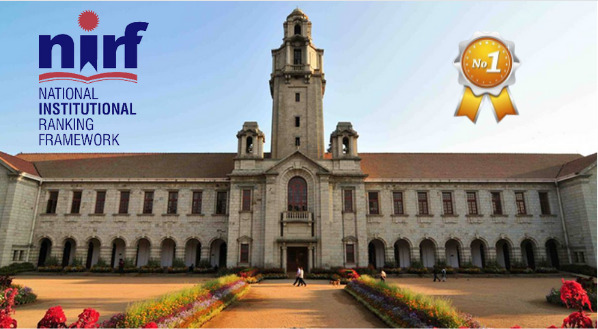Union Education Minister Dharmendra Pradhan on Thursday (September 9) released the National Institute Ranking Framework (NIRF) 2021. The ranking list witnessed the Indian Institute of Science, IISc Bengaluru being judged as the best research institute in the country followed by IIT Madras and IIT Bombay at second and third ranks, respectively. Overall, IISc emerged as the second-highest ranked institute in the country, followed by IIT Madras.
It is for the first time that NIRF introduced a category for research. Until this year, NIRF ranked for 10 categories: Overall, University, Management, College, Pharmacy, Medical, Engineering, Architecture, ARIIA (Atal Ranking of Institutions on Innovation Achievements), and Law.
Bengaluru and IISc – India’s technological hub
Bengaluru has been the hub of India’s technological advancements and hence rightfully carries the sobriquet of ‘Silicon valley of India’. IISc has greatly added to the city’s reputation by carrying forward the scientific temperament the ecosystem of scientists and researchers have developed in the city.
IISc beating top foreign institutions
IISc’s founding director was Nobel-winning physicist C V Raman, and there was no debate regarding IISc’s place in the rankings. It had been coming for a long time. The institute, earlier this year had been ranked the world’s top research university for achieving a perfect score of 100 on 100 in the metric of citations per faculty (CPF) indicator, ahead of varsities like Princeton, Harvard, Gwangju Institute of Science and Technology, Georgia Institute of Technology and Caltech.
The rankings were compiled by Quacquarelli Symonds (QS) World Rankings which carries an annual publication of university rankings in partnership with the scientific publishing company, Elsevier.
The rankings evaluated institutes on six metrics: academic reputation, employer reputation, faculty/student ratio, international faculty ratio, international student ratio, and citations per faculty.
The last of these indicators, on which IISc emerged as number one, is analysed by dividing the total number of citations received by a university’s research papers over five years by the number of faculty at that institution, normalised for the subject of research.
After the rankings were announced, Prime Minister Narendra Modi took to Twitter to congratulate the institution on its achievement. He tweeted, “Congratulations to @iiscbangalore, @iitbombay and @iitdelhi . Efforts are underway to ensure more universities and institutions of India scale global excellence and support intellectual prowess among the youth.”
Congratulations to @iiscbangalore, @iitbombay and @iitdelhi. Efforts are underway to ensure more universities and institutions of India scale global excellence and support intellectual prowess among the youth. https://t.co/NHnQ8EvN28
— Narendra Modi (@narendramodi) June 9, 2021
Carrying the mantle in Times Higher Education rankings
As reported by TFI last week, a total of 71 Indian universities had made it to the Times Higher Education (THE) World University Rankings 2022, up from 63 last year. While none of them managed to breach the top-300 barrier but IIS – a regular in the list, managed to find itself in the 301-350 band for a third consecutive year.
However, it is imperative to note that older IITs like Bombay, Delhi, Guwahati, Kanpur, Kharagpur, Madras and Roorkee had not participated in THE rankings, citing a lack of transparency in the ranking methodology and parameters.
The then Human Resource Development Minister Ramesh Pokhriyal ‘Nishank’ had supported the IITs call and iterated that regional ranking would be a better assessment of the extensive research work carried by the Indian institutions, not perception.
Echoing similar sentiments, Dharmendra Pradhan whilst releasing the list said, “Rankings are the measure of the quality and excellence of an institution. We must develop regional ranking frameworks and also work to ensure that our ranking framework emerges as a benchmark not only in the country, but also globally, especially for the developing economies,”
IISc is the crown jewel of the country and if the government continues to ramp up its funding for the institution, it would only be a matter of time when it starts to beat foreign universities on other metrics as well.
































This is a pretty useless article!
First, I do not understand why so much importance is given to the rankings! If funding is a major aspect of the ranking, there is no point subscribing to such rankings. Usually, these rankings focus on certain numerical quantifiable metrics and do not necessarily measure the quality. of the products of these institutes. That is where the problem lies.
What people do not realize is the following: Higher Ed is a multi-billion dollar business. For this obvious reason, the West is going to do whatever it takes (for example, changing the weights for the constituent factors) to make sure that the usual suspects come up on the top.